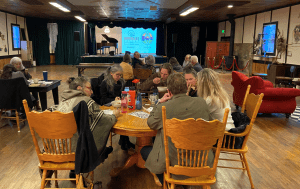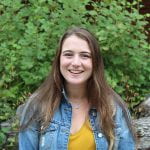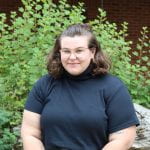By Ryan Pernell, Outreach and Engagement Assistant, A Greater Applegate

There are many stories I could share that capture the impact the RARE Program has had here in the Applegate since my start date in September. AGA’s neighborhood listening sessions are growing in attendance and enthusiasm, the Applegate Valley Business Network has formed and has started working on projects aimed to support the economic vitality of the region and A Greater Applegate has been able to begin responding to some of the needs of the community that are increasingly becoming known to the organization. These are all things that I have played a part in and take great pride in.
Probably the best example of the RARE program’s impact on the Applegate Valley is A Greater Applegate’s graceful, albeit on-the-fly, transition from general community building to community organizing in the context of COVID-19 emergency preparedness & response in partnership with the greater community.

Emergency preparedness in the Applegate is something that is frequently the minds of Applegaters but has had little success being implemented on a valley wide scale. As a 500 square mile region, with a population of nearly 18,000 and no formal governing body, it quickly became clear to AGA that the Applegate was going to be one of the last regions between three counties that would be considered for aid and allocated resources in this emergency and future emergencies. Fortunately, AGA was able to harness the power of the networks (business, nonprofit, neighborhood) that we have been steadily building over the last year and relationships created with stakeholders outside of the valley to formally organize around a response effort to ensure residents of the Applegate Valley have access to the resources they need for the duration of the pandemic.

There certainly has been no shortage of willingness within the community to help and because of that some really incredible response has taken place. AGA was able to assess what people were already doing, help organize those efforts and fill in the gaps when needed. Some of the key projects we have taken on as a result include developing and coordinating an Applegate Valley Mutual Aid Network, coordinating with local farmers/producers and foodbanks to ensure the local food system remained functional and people had access to food, implemented a virtual information hub for businesses, nonprofits and community members on our community website (applegateconnect.org) and provided Zoom trainings/hosted Zoom meetings for organizations without access to the program.
This response effort has shown the impact that AGA’s community building efforts have had for this valley. Because AGA had already been laying the framework for a resilient community prior to the emergency, Applegaters were able to make an easy transition to addressing needs and supporting one another in the face of this unprecedented event.
 About the author, Ryan Pernell: Ryan graduated from Western Washington University with a B.A. in Urban Planning and Sustainable Development and a Minor in Disaster Risk Reduction. Ryan enjoys the intersection between community development, health and safety, and environmental sustainability. Ryan looks forward to bringing her experience working in rural communities to the nonprofit sector and engaging with individuals who care deeply about the place they live.
About the author, Ryan Pernell: Ryan graduated from Western Washington University with a B.A. in Urban Planning and Sustainable Development and a Minor in Disaster Risk Reduction. Ryan enjoys the intersection between community development, health and safety, and environmental sustainability. Ryan looks forward to bringing her experience working in rural communities to the nonprofit sector and engaging with individuals who care deeply about the place they live.

